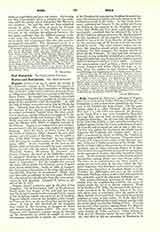

Nogaret, GUILLAUME DE, b. about the middle of the thirteenth century at St. Felix-en-Lauragais; d. 1314; he was one of the chief counsellors of Philip the Fair, of France (1285-1314), said to be descended from an Albigensian family and was a protege of the lawyer, Pierre Flotte. He studied law, winning a doctorate and a professorship, and was appointed, in 1294, royal judge of the seneschal’s court of Beaucaire. In 1299 the title of knight was conferred on him by Philip the Fair. Imbued, from his study of Roman law, with the doctrine of the absolute supremacy of the king, no scruple restrained Nogaret when the royal power was in question, and his influence was apparent in the struggle between Philip and Boniface VIII. In 1300 Philip sent him as ambassador to the Holy See to excuse his alliance with Albert of Austria, usurper of the Empire. Nogaret, according to his own account, remonstrated with the pope, who replied in vigorous language. After the death of Pierre Flotte at the the battle of Courtrai (1302), Nogaret became chief adviser and evil genius of the king. On the publication of the Bull “Unam Sanctam” he was charged with directing the conflict against the Holy See (February, 1303). At the Assembly of the Louvre (March 12, 1303), he bitterly attacked the pope, and later, allying himself with the pope’s Italian enemies (the Florentine banker, Musciatto de Franzesi, and Sciarra Colonna, the head of the Ghibelline party), he surprised Boniface in his palace at Anagni and arrested him after subjecting him to outrageous treatment (September 7). But the inhabitants rescued the pope, whose death (October 11), saved Nogaret from severe retribution. Early in 1304, at Languedoc, he explained his actions to the king, and received considerable property as recompense. Philip even sent him with an embassy to the new pope, Benedict XI, who refused to absolve him from the excommunication he had incurred. Clement V, however, absolved him in 1311.
Nogaret played a decisive part in the trial of the Templars. On September 22, 1307, at Maubuisson, Philip made him keeper of the seal and the same day the Royal Council issued a warrant for the arrest of the Templars, which was executed on October 12; Nogaret himself arrested the Knights of the Temple in Paris and drew up the proclamation justifying the crime. It was he who directed all the measures that ended in the execution of Jacques de Molai and the principal Templars (1314). The same year Nogaret, who displayed untiring energy in drawing up the documents by which he sought to ruin his adversaries, undertook to justify the condemnation of the Templars by announcing the plans for a new crusade, the expenses of which were to be defrayed by the confiscated goods of the Order. In this Latin document, addressed to Clement V, the author attributes the failure of the crusades to the Templars and declares that Philip the Fair alone could direct them successfully, provided that he obtained the help of all the Christian princes to secure the funds required for the expedition; all the property of the Templars should be given to the king, likewise all legacies left for the crusades and all the benefices in Christendom should be taxed. The other military orders, the abbeys, the churches should retain only the property necessary for their support, the surplus should be given for the Crusade. No one took this document seriously, it was probably intended as a solemn hoax. Nogaret’s influence may be seen in the trial for sorcery against Guichard, bishop of Troyes (1308). A zealous but unscrupulous royal partisan, a fierce and bitter enemy, Nogaret died before Philip the Fair, at the time when the regime he had devoted himself to establishing was beginning to be attacked on all sides.
LOUIS BREHIER

